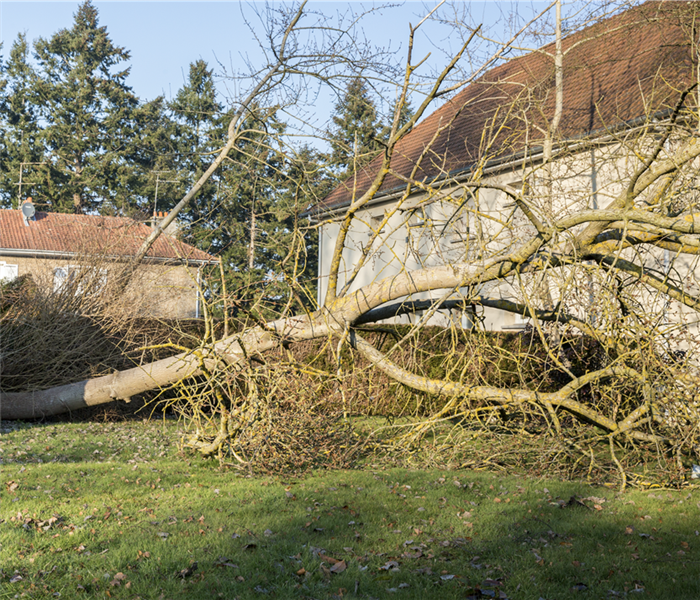Key Differences Between Storm Damage and Flooding
12/23/2019 (Permalink)
It's a scenario that no business owner wants to encounter: You come to work one day and find water on the floor or dripping from the ceiling. Not only do you worry about the cost and inconvenience of cleaning it up and making repairs, but there's a chance it'll interrupt your operations. Flood damage can be severe, but incoming water doesn't necessarily have to cause widespread problems. It's important to make a distinction between a flood and damage from a storm.
Prevention Tips
There are ways you can minimize the risk of flooding in your Hillside, IL, office. Keeping water out of the building will help safeguard building materials, electronic equipment, documents and more. Look at the following safety measures:
- Install a backflow system in the plumbing.
- Have a sump pump in the lower levels of the facility.
- Check pipes and the roof for leaks.
- Make sure water is draining away from the building.
Storm Damage
Heavy rains and other severe weather such as thunderstorms or hurricanes can cause significant storm damage. High winds can damage the roof and tear off the siding. Wind gusts can even knock over trees onto the building. Rain can come into the office through cracks in the foundation or gaps in windows. All of these factors can destroy drywall, flooring and other building materials. Without the help of a professional disaster cleanup team, you face a lengthy recovery process.
Floods
Flood damage can come from both storms and from other causes. While incoming rain and overflowing waterways certainly pose dangers. Your office may be prone to floods from other sources such as a sewer backup, the main water line break or bursting pipes. Floods from these culprits can sometimes be more severe because you may not immediately detect them.
Whether your building has suffered flood damage from a storm or a malfunctioning system in the office, you need to act fast. Call a reliable water removal expert to make your office safe once more.






 24/7 Emergency Service
24/7 Emergency Service
